Groups Call For Green Climate Fund To Reject Banks Linked to Coal
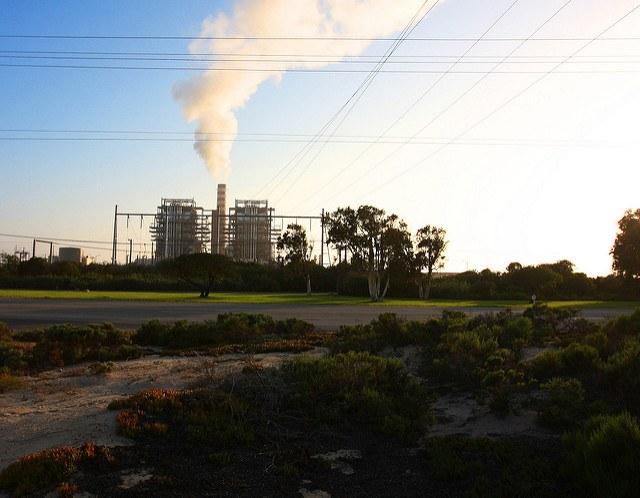

More than 170 civil society groups worldwide have a message for the Green Climate Fund, the financial mechanism of the Paris climate agreement. They're calling on the fund's board to reject the accreditation of two international banks, HSBC and Crédit Agricole, citing their connections to the coal sector.
Both rank among the top 20 private-sector banks that finance coal. HSBC extended over $8.7 billion to coal from 2005 to April 2015, and Crédit Agricole extended $7.7 billion to coal during the same time period.
A project in South America serves as an example of how both banks fund the coal sector. HSBC invested $3.13 billion in the companies responsible for the Cerrejon project in Colombia, which is the largest open-pit mine in South America. Cerrejon has a big climate change impact plus it is linked to the forcible displacement of farming communities and destruction of sacred sites. Crédit Agricole is the lead arranger on a $6.8 billion corporate loan to Glencore, the co-owner of the Cerrejon project.
Coal is a big cause of climate change. The combustion of coal “adds a significant amount of carbon dioxide to the atmosphere per unit of heat energy,” according to the Energy Information Administration (EIA). The carbon emitted from the combustion of coal is greater than from the combustion of other types of fossil fuels. And coal in general is the “most polluting of all fossil fuels,” as Greenpeace puts it.
"The Green Climate Fund Board must reject HSBC and Crédit Agricole. Creating new business for big banks with large fossil fuel portfolios and poor records on human rights and financial scandal would undermine the very purpose of the Fund,” Karen Orenstein of Friends of the Earth U.S. said in a statement.A BankTrack briefing from May 2015 highlights some of Crédit Agricole’s coal investments, and describes the bank as “key coal player globally.”"Accrediting HSBC and Crédit Agricole would be inconsistent with both the Paris Agreement, and with upholding high human rights standards," stated Annaka Peterson of Oxfam.
"The accreditation of these banking giants would jeopardize the reputation of the Green Climate Fund and expose it to unnecessarily high fiduciary risk," added Yann Louvel of BankTrack.
While the bank has “specific policies” on its coal financing, the brief points out, the problem is the effectiveness of those policies. One of the limitations of its coal financing policy is that it "does not apply to Crédit Agricole’s financing of coal companies through general corporate loans or underwriting,” BankTrack reports. Even if the policy does apply to advisory services, “it is still not stringent enough.”
For example, the bank provided services in 2014 for the proposed 500 megawatt coal-fired Plomin plant in Croatia and “has not yet ruled itself out of financial involvement in this project which is facing huge public opposition,” the group reports.
BankTrack recommends that Crédit Agricole take the following actions:
- Commit to end any new coal project financing and to decrease the general corporate coal financing for both coal mining and coal power.
- Commit to living up to its responsibilities to communities around the globe by refusing future business for coal companies and projects linked to human rights abuses.
- Take BankTrack’s Paris Pledge to quit coal.
A look at the policies of both banks concerning coal is very interesting. Crédit Agricole states that “coal plays a major role as a global source of energy, in particular for electricity generation," but admits that coal-fired plants account for a "significant share of greenhouse gas (GHG) emissions related to human activity.”
HSBC states that coal-fired power plants are “the most significant contributor to climate change.” Yet, its ambiguous policy on financing them is that it will “increasingly support only new [coal-fired plants] which have lower carbon intensities.” It has different policies for developed and developing countries and “will require more robust standards for developed countries.” Meanwhile, HSBC brags that it has committed to reducing its annual carbon emissions per employee.
Both banks clearly realize that coal plays a big role in climate change. It is time for them to stop funding the sector.
Image credit: Rennent Stowe
Oregon Sets a New Standard: Coal-Free by 2035
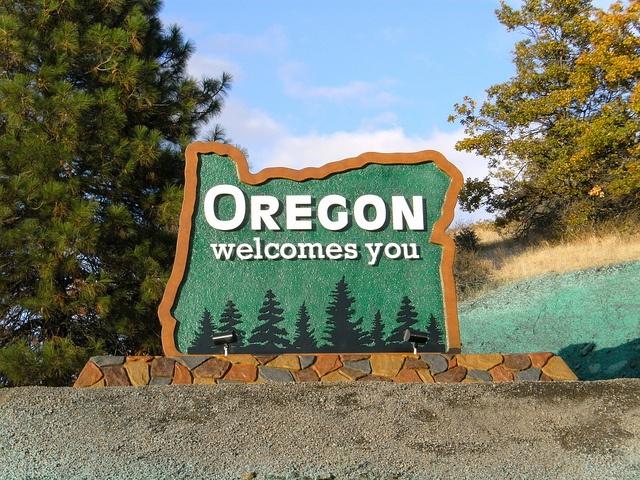

In a bi-partisan vote that brought together utilities, consumers and environmentalists, Oregon's legislature has passed the most ambitious, anti-coal, pro-renewables legislation in the country.
“Today’s vote is a win-win for our climate and clean energy here in Oregon. The Clean Electricity and Coal Transition plan shows that we can come together to advance real climate solutions as we move away from coal and toward more clean energy,” said Andy Maggi, director of the Sierra Club's Oregon chapter, in a press statement last week.
The bill will double the state's use of renewables by 2050, and mandate that use of coal power is eliminated by 2035. It is expected to be signed by Gov. Kate Brown shortly.
“Commitments like Oregon's are essential to the global effort to contain and reduce carbon dioxide emissions to levels that can protect the Earth for future generations,” Angus Duncan, chair of the Oregon Global Warming Commission, wrote in a blog post.
The past few months have seen a new wave of powerful actions from cities and states. California passed legislation mandating 50 percent renewable energy by 2030, while its second largest city, San Diego, went a step further, aiming for 100 percent. This comes in light of the historic Paris Climate Accord signed last year, which puts the world closer to a clean-energy future.
Oregon will be firmly on that path. “Combined with Oregon's existing hydroelectric base, that means the state will be on track for an electricity system that's 70 to 90 percent carbon-free by that date,” Duncan wrote.
There is no underestimating how big this new is. In 2009, when I working for the Sierra Club, I visited Oregon to meet with local organizers trying to both prevent any increase in coal electricity use throughout the Pacific Northwest, and the construction of a massive export terminal. Had it gone through, it would have let dirty coal from Wyoming, Montana, and other nearby states to be shipped across the Pacific, negatively impacting air quality and health in Asia.
Today, those terminals are shelved, and Oregon is on the path toward what we then thought was an ambitious goal – a coal-free grip. In fact, in the past seven years, we've seen an unprecedented collapse in the coal market in the United States. Now, across the Pacific, coal demand is dropping fast in Asia, giving many hope that coal will soon only be found its rightful place: deep underground.
Now, we need other U.S. states to join Oregon. Every little bit helps. We need more ambitious, anti-fossil fuels, pro-renewables plans in order to avoid the worst of climate change. Oregon is pointing the way forward. It's time for the rest of America, and the world, to follow.
Photo Credit: Oregon DOT via Flickr
Greenpeace: Brands (Still) Not Doing Enough to Protect Indonesian Forests
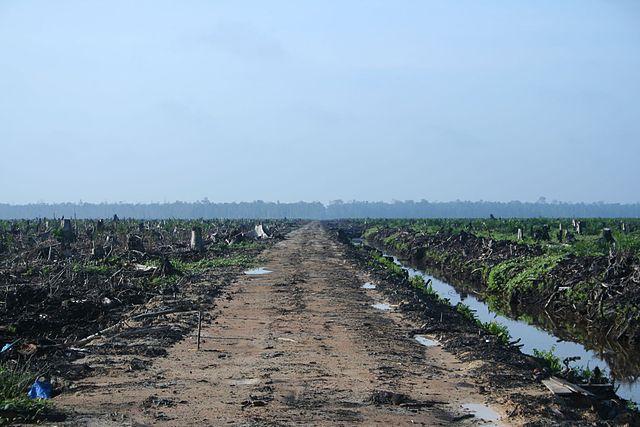

Last year's horrendous Southeast Asian forest fires, which emitted more greenhouse gases into the atmosphere than the entire United Kingdom, should have been a wake-up call to companies to ensure their supply chains were free of unsustainable palm oil, the primary cause of deforestation in Indonesia. Yet, Greenpeace finds that, out of 14 major U.S. brands, only one can trace its palm oil, and few have made any discernible action in light of last year's tragedy.
In the months since the fires subsided, we've seen a host of commitments and promises from governments and corporations alike. The question is whether these statements are something new, or just more of the same old rhetoric without action. Remember, the Roundtable on Sustainable Palm Oil, which was supposed to end illegal deforestation in this sector, has been around for more than a decade. Yet the fires continue to burn, year after year.
The key problem is transparency. According to Greenpeace, few players are obtaining independent verification to demonstrate that their palm oil is produced by companies operating in compliance with their own ‘no deforestation’ policies. To make matters worse, none are yet publishing a full list of their palm oil suppliers, nor do they list the suppliers that they have ceased purchasing from due to unsustainable practices. Without this, how are we to know if they are even following through on their statements? This is corporate responsibility as its core.
“These companies must have a fully transparent supply chain and ensure they only buy palm oil from suppliers that are protecting our rainforests,” said Annisa Rahmawati, with Greenpeace Indonesia, in a press statement.
When companies are not open, we have to assume there is a reason. Until PepsiCo, Colgate, Johnson & Johnson, and other users of Indonesian palm oil come clean about their supply chains and how they plan to ensure that their products are deforestation-free, then we must assume the worst.
Companies, too often, hide behind long, complicated supply chains to avoid complicity in what's happening at the source, such as the destruction of Indonesia's rich, biodiverse forests. Sometimes this is intentional – they know they're buying from unethical sources and want to hide that information. But more often, its ignorance – purchasing palm oil on the open market with no care where it comes from, as long as it's cheap and does that job. It's hard to implement sound supply-chain practices over a broken system.
This old way of doing things is no longer acceptable. “Palm oil is found in so many products, which is why brands have a responsibility to their customers to act,” Rahmawati said. Greenpeace is, literally, putting corporations' feet to the fire, forcing them to re-think how they manage their palm oil supply chains. If you buy from sources connected to deforestation, then you are also responsible.
There is no time to waste, we need act now, because, already, hotspots are appearing across the Indonesian island of Sumatra, foreshadowing what could be another El Nino-driven year of horrendous fires.
The ultimate power lies in the hands of consumers, who need to be more vocal that they will not purchase products that use unsustainable palm oil. Unfortunately, as things stand, months after the fires, you can still find palm oil from a burning supply chain in grocery stores all across America.
Photo Credit: Hayden via Wikimedia Commons
Pigs Have Flown: A Constructive Conversation on Twitter with Monsanto
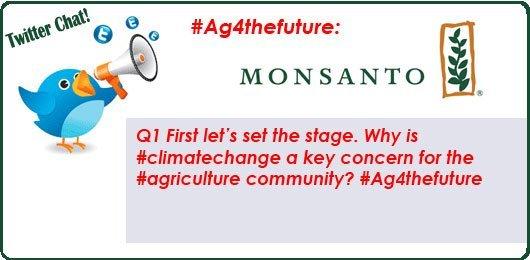

Yesterday morning the TriplePundit team was nervous. We'd publicized the heck out of our Twitter chat with Monsanto. Feedback from our community was mixed. We got lots of kudos for tackling a tough conversation, and a lot of people also expressed concern that hosting this chat might have a negative impact on TriplePundit's brand. We also heard some concerns about money -- Monsanto paid us our usual rate for facilitating and promoting the chat.
#Ag4thefuture is NOT #Monsanto Guess TP's motto is now Profit 1st. Very disappointed with your choice of sponsorship https://t.co/Vy66XiHQQd
— Dr. Karen Lee (@drkarenslee) March 3, 2016
But we persevered. We trusted our core audience to understand what we were trying to do: have a constructive conversation and build some bridges with an organization that has a lot of power and opportunity to do good.
It's easy to do sustainability work with companies who already work sustainably @triplepundit, @nickaster @jenboynton— Simon Robinson (@srerobinson) March 8, 2016
Thanks @JenBoynton It's a pretty brave move to position @MonsantoCo as eco+ve via @TriplePundit so it will be interesting to see reactions.— Simon Robinson (@srerobinson) March 8, 2016
The beauty of Twitter is it gives everyone a chance to participate. However, that means that any hashtag can be co-opted by any group to get its message out. We were concerned that the channel might become overwhelmed with angry tweets.
I have to say I'm incredibly heartened by our community. Many participants had tough questions for our hosts. We love to see that!
.@MonsantoCo: You aren't trusted by most due to your history. Why should we trust you now? How will you earn & prove it. #Ag4thefuture— Henk Campher (@AngryAfrican) March 8, 2016
But what we loved even more was to see intellectually robust questions and answers that furthered the conversation on soil and climate change -- a substantive topic!
Q3. Why is soil health so important? It’s just dirt, right? #Ag4thefuture https://t.co/sZVgVjmZQs
— TriplePundit.com (@TriplePundit) March 8, 2016
A3a Soil is a precious resource. How we till it can can be a key part of being carbon neutral. #Ag4theFuture— Monsanto Company (@MonsantoCo) March 8, 2016
A3b I think that’s a common misconception of farmers, that they don’t care for soil by using GMOs, herbicides or pesticides. #Ag4theFuture
— Monsanto Company (@MonsantoCo) March 8, 2016
A3c Farmers’ livelihoods depend on the land. Why would they not want to be good stewards of that land? #Ag4theFuture— Monsanto Company (@MonsantoCo) March 8, 2016
A3a: No, “don’t treat your soil like dirt!” Take it from these student rappers @IowaNRCS: https://t.co/5VFIurJMQC #Ag4thefuture
— Nick (@SoilPartners) March 8, 2016
A3b: Farmers can be carbon sequestration heroes. Restoring soil organic matter = mind-blowing effect on #climatechange! #Ag4thefuture— Nick (@SoilPartners) March 8, 2016
A3c: #Soil is critical for stable food supply. Soils support plant growth, recycle nutrients & provide habitat for organisms. #Ag4thefuture— Nick (@SoilPartners) March 8, 2016
A3a Healthy soils=healthy crops. Soil is the lifeblood of a growing crop, functioning as a living system to help grow our food.#Ag4thefuture— Climate Corporation (@climatecorp) March 8, 2016
A3b Soil characteristics have a big impact on crop growth, from how much moisture is retained to how nutrients move through it.#Ag4thefuture— Climate Corporation (@climatecorp) March 8, 2016
You can read the whole Storify summary here.
We also saw Monsanto's own CEO Hugh Grant engage with our audience in an authentic manner. He even indicated in a Periscope broadcast after the chat that Monsanto's position on GMO labeling may be shifting.
"The myth is that we're against labeling. The reality is we would support some kind of federal standard. We would support something that covers the country, that helps consumers. Our concern has been the danger of a state-by-state labeling approach that resulted in confusion and expense."
This statement is somewhat at odds with Monsanto's website, last updated in 2013:
"We oppose mandatory labeling of food and ingredients developed from GM seeds in the absence of any demonstrated risks, as it could be interpreted as a warning or imply that food products containing these ingredients are somehow inferior to their conventional or organic counterparts."
Grant's comments on labeling will probably come as a surprise to sustainable agriculture advocates, as Monsanto has spent over $22 million lobbying against GMO-labeling bills at the state level.
Now that Vermont has passed a GMO-labeling bill, U.S. Rep. Michael Pompeo (R-Kan.) sponsored legislation to strip states' rights to pass labeling bills. This legislation, the Safe and Accurate Food Labeling Act, is colloquially known as the “Deny Americans the Right to Know (DARK) Act." The bill would, according to advocacy organization Just Label It, "make voluntary labeling for GMO foods the national standard and strip away consumers’ right to know by blocking all state efforts to require labeling of GMO foods." Monsanto is one of Pompeo's key supporters, having given the Pompeo for Congress committee the maximum contribution of $5,000 in 2015. Monsanto is also a leading member of the Grocery Manufacturers Association, which is lobbying hard in favor of the DARK Act.
We are pleased to see Monsanto CEO Hugh Grant go on the record supporting some kind of GMO labeling at the federal level. Obviously the next step would be for Monsanto to stop lobbying against these labeling efforts.
Social Entrepreneurship and Development: Observations from West Africa


By Thane Kreiner
The challenges facing the African subcontinent are many and daunting, including widespread famine and drought, wars and instability, the ravages of tropical diseases, and general lack of the infrastructure needed for people to thrive. At the same time, there are many hopeful and even exciting trends in Africa.
I had a chance to witness both extremes first-hand during a recent trip to West Africa — Sierra Leone and Ghana — for business-model workshops with some bright young entrepreneurs. I co-led the workshops, GSBI Boost programs organized by Miller Center for Entrepreneurship’s Global Social Benefit Institute (GSBI), with Pamela Roussos, senior director of GSBI.
While it would be ridiculous to try to draw grand conclusions from a single trip, I would like to share some observations that I hope will spur some useful conversations around how we, in the capacity-developing world, could better approach development efforts in general.
Social entrepreneurship doesn’t mean the same thing everywhere
In both Sierra Leone and Ghana, people asked us: “What’s the difference between a regular enterprise that creates jobs and a social enterprise?"
A number of the African entrepreneurs we talked with had a hard time making the distinction we make: A social enterprise is defined by an explicit intention to create social or environmental benefit. But what about something like an online shopping website, which was one of the enterprises represented in the workshops? While the primary goal of the venture is to generate profits, it will also make it easier for Sierra Leoneans to purchase products from overseas with less red tape, and it will provide employment opportunities.
Or how about a restaurant home delivery enterprise, which also focuses on profit generation, but will help food distribution and create local jobs? Many in the social enterprise sector — including myself -– have not included these kinds of ventures in our definitions of social enterprises because their main intention is not to effect social or environmental change.
Are such distinctions meaningful in places like Sierra Leone and Ghana? Who decides what is and isn’t a social enterprise?
It's up to the people
Expanding on the “who decides” theme, my experiences in West Africa reinforced a main edict of social entrepreneurship: The people and communities who are in need of help are the best, and really the only, ones qualified to identify optimal solutions to their problems.
Well-intentioned aid projects initiated from the outside often fail because they don’t take into consideration important cultural and social practices, beliefs and preferences, or physical realities.
As an example taken from India, development projects can attempt to address widespread public defecation by providing all the toilets, but if there’s a cultural bias against using toilets in a home, the toilets will sit unused.
Climate change is already happening
It’s impossible to visit places like Sierra Leone and Ghana without being forcefully aware of the challenges that climate change is already inflicting, especially on poor communities. Impacts of climate change include the increase in transmittable diseases such as Ebola and Zika; exacerbation of desertification; and heightening of deforestation, drought, soil erosion, and other factors that make ecosystem services for food, water, energy and shelter unavailable.
Many of the social entrepreneurs we worked with in West Africa are creating local solutions to enable some level of climate resilience. That is in line with our overall experience at Miller Center, where roughly half of the 550+ social enterprises that have attended GSBI programs are engaged in activities that address climate resilience through clean energy, water for drinking and agriculture, sustainable rural development, and health.
Women are embracing leadership
Women are assuming strong leadership roles and are generating some of the most inspiring and promising enterprises we encountered in West Africa.
These young women entrepreneurs displayed impressive intelligence and ambition. But what really moved me was their ability to grasp fundamental business principles and apply them immediately to their own burgeoning enterprises. One young woman — just out of high school — was transforming bio-waste into a fuel to address both energy poverty and deforestation. Another was creating high-quality carpets from the plastic waste that pervades the developing world. Still others were training community health workers and providing brand consulting for African women leaders.
The bottom line
Regardless of how one chooses to define social entrepreneurship, the core principles can transform global human development paradigms. We’ll still need aid after huge natural and human-caused disasters. There will be more outbreaks of diseases like Ebola, and a mobilization of international resources will be essential to control those outbreaks and prevent as many people as possible from dying.
But at the end of the day, how do countries take control of their own destinies? To me, the catalytic ingredient is social entrepreneurship. Even in a place like Sierra Leone that had a long, brutal civil war and an Ebola epidemic, we witnessed how entrepreneurial principles were inspiring young people who otherwise might not have employment. They are the ones who are generating new ideas and applying them to advance their communities and their societies.
Meeting young entrepreneurs like the ones we worked with in West Africa left me feeling optimistic about their futures — and ours — which I didn’t anticipate. Despite the evident poverty, I had the sense that many young, well-educated and passionate people want to apply their educations to make a difference in their countries. And for many of them, social entrepreneurship is the best avenue for success.
Image courtesy of the author
Thane Kreiner, Ph.D., is executive director of Miller Center for Social Entrepreneurship, and Howard and Alida Charney University Professor, at Santa Clara University in California.
Procter & Gamble Rejects Some Ingredients Linked to Cancer


Although they may contain smells that imitate a mountain breeze or spring flowers, many personal care and household products contain chemicals with negative health effects, ranging from skin and throat irritation to carcinogenicity.
U.S. product manufacturers are not required to list all ingredients on product packaging because they are considered trade secrets, so it is difficult for consumers to make informed purchasing decisions. For example, the term “fragrance” on the label can refer to a combination of several hundred chemicals, including some that are hazardous.
In a move driven by consumer demand and potential liability, and not regulatory policy, companies are voluntarily taking actions to disclose and sometimes limit the chemicals used in fragrances.
Procter & Gamble, a multinational manufacturer of family, personal care and household products, has taken steps toward greater transparency of the ingredients in its products by making public a list on its website of more than 140 chemicals it rejects in product fragrances. In 2012, Procter & Gamble also disclosed a list of ingredients in its fragrance palette.
Some of the chemicals the manufacturer excludes are linked to endocrine disruption, reproductive toxicity and even cancer. These chemicals, however, continue to be used by other companies in products on the market.
"I’m very encouraged and impressed by the Procter & Gamble announcement and optimistic that before long fragrance ingredients will be fully transparent in the global market," said Ken Cook, president of the Environmental Working Group (EWG), in a press release. "The trend toward full transparency — in food, personal care, cleaning products and many other categories -- is not just undeniable; it’s accelerating and irreversible."
The EWG "uses the power of information to protect public health and the environment." As an organization dedicated to protecting human health and the environment, it works towards greater transparency, research and education to drive consumer choice and civic action.
Such organizations can help educate the public about the importance of greater product transparency, especially when adequate governmental regulations are lacking. This in turn fuels consumer demand for safer products. The recent transparency initiatives by Procter & Gamble illustrate that consumer demand is shaping corporate actions.
SC Johnson has taken similar steps toward greater transparency by creating its WhatsInsideSCJohnson.com ingredient website. It has also revealed 100 percent of its fragrance ingredients to the component level for the new Glade Fresh Citrus Blossoms Collection. SC Johnson's decision is monumental because it's the first time a major company has agreed to fully disclose the composition of product fragrances.
In addition to consumer demand, companies can be held liable for the health impacts of their products. Johnson & Johnson was recently ordered to pay $72 million in damages to a woman's family whose death from ovarian cancer was linked to her use of talc-based Baby Powder and Shower to Shower over several decades. The company also faces several hundred other lawsuits related to its failure to warn customers about the cancer risk of its talc-based products.
The U.S. government has primarily taken a passive “innocent until proven guilty” approach to the use of chemicals in household products and commerce in general. In fact, the Environmental Protection Agency (EPA) has required testing on only a handful of the chemicals used in commerce today under the Toxic Substances Control Act (TSCA). Only if a chemical is shown to present “unreasonable risk to human health or the environment” does the EPA actually regulate it.
It seems market forces, not government regulation, are shaping corporate action, with the recent transparency moves by Procter & Gamble and SC Johnson as prime examples. Brand value is seriously eroded when consumers fear bringing these products into their homes. Taking voluntary actions to protect human health seems like the best way to respond to emerging concerns over product safety.
Image credit: Flickr/Aqua Mechanical
Plastics Industry Seeks More Zero-Waste Programs
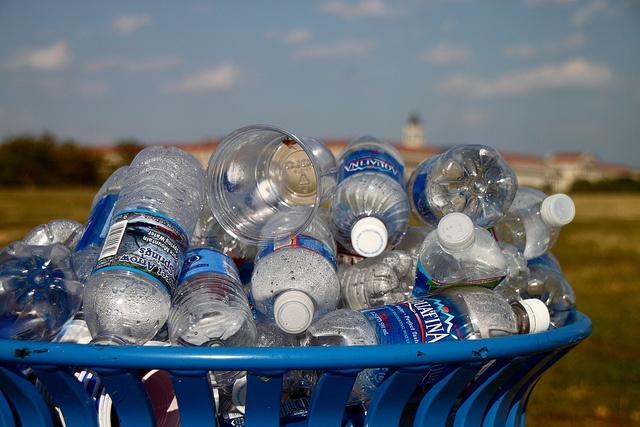

Zero waste has become the mantra of more companies and municipalities as landfill space is running out and consumers are becoming more aware of the impact wastes such as plastic have on the environment. And speaking of plastics, one of the industry’s oldest and largest trade associations, the Plastics Industry Trade Association (SPI), is starting to nudge its members to consider launching zero-waste programs.
To that end, SPI tweaked its mission statement and now claims that zero waste is integral to the long-term success of the plastics industry.
In order to give this mission statement more teeth, SPI launched a recognition program for member companies that are working toward zero-net-waste within their manufacturing operations. While offering participating companies several lofty goals, the bottom line for SPI is to maximize its members’ waste-diversion efforts, such as the return of excess materials like resins to a manufacturing process or implementing an energy-recovery program in areas where recycling is not necessarily viable.
So, what do companies have to do? A qualification and verification process is the starting point. Companies need to evaluate how they can improve waste management within their operations, and determine what they are going to do with unwanted materials that include scrap, office and cafeteria waste, landscaping debris and waste, unwanted construction materials, and potentially toxic materials such as light bulbs, batteries and chemicals. Once a company has sent all documentation requested by SPI, it is permitted to use the SPI’s Zero Net Waste program logo.
There is one point, however, that will raise some eyebrows: SPI does not require any third-party verification. “SPI’s assumption is that companies will be honest and forthcoming with the information they are providing to meet qualification and verification requirements,” says the organization in its Zero Net Waste program materials.
Nevertheless, self-policing is better than taking no steps at all. The SPI’s goal is for companies to adopt the best possible waste-management practices without “onerous” restrictions -- as in, regulations. SPI warns its members to take the program seriously and to avoid greenwashing. How a company would be discovered in violation of SPI’s terms and conditions for using its logos, however, is left unsaid. But of course in this age of social media, woe to any company that exaggerates or fibs about its sustainability efforts.
For the plastic industry’s shift to adopting zero-waste programs, or at least programs close to zero waste, reflects what is unfolding at more companies here in the U.S. and abroad. Cities such as Minneapolis, San Francisco and Palo Alto, California, have shown municipalities how they can inch toward total landfill diversion. CPG companies such as Unilever and Procter & Gamble, the products of which generate massive amounts of garbage on their own, have also made huge strides on the zero-waste front.
With other potential partners around, such as the upcycling giant TerraCycle, there are plenty of opportunities for companies to become more innovative with their trash so they can turn it into treasure. And in the meantime, they can gain the trust of their stakeholders and increasingly fickle consumers.
Image credit: Flickr (Mr.TinDC)
How Fleet Management Can Reduce Your Carbon Footprint
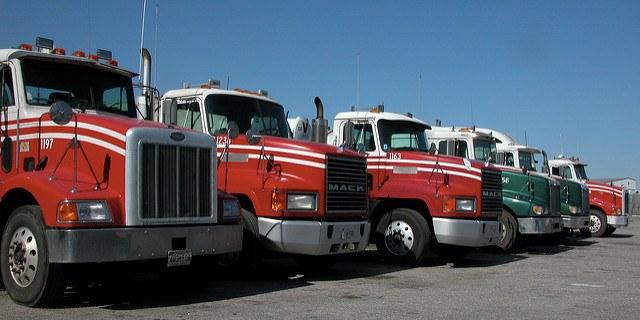

By Robert J. Hall
Of the nearly 7 billion metric tons of greenhouse gases the U.S. emits every year, 27 percent of those emissions come from the transportation sector.
Driving a personal car for private use contributes to this pollution. However, if you manage a fleet of vehicles, the negative environmental impact is even higher.
What steps can you take to reduce your carbon footprint — even as your organization continues to expand?
Let’s take a look.
1. Reduce idling
According to the Environmental Protection Agency (EPA), a standard heavy-duty truck burns roughly one gallon of diesel for every hour that it's left idling. Your own vehicles may be much smaller, but when you multiply those losses across an entire fleet, they quickly add up. Verify for yourself by using this free online calculator.
Instructing your drivers to turn off their vehicles whenever they stop can offer huge environmental and financial savings.
2. Drive responsibly
Although optimal fuel economy varies from vehicle to vehicle, most cars and trucks begin losing gas mileage once you exceed 55 miles per hour. The same goes for aggressive acceleration and braking. With passenger cars, these two activities can reduce gas mileage by as much as 33 percent on the highway. If you’re hauling heavy loads in larger vehicles, the waste is even greater.
Having your drivers use cruise control makes it easier to consistently follow local speed limits.
3. Use GPS fleet management software
What gets measured gets managed, and by using fleet management software (FMS) you can more accurately assess both historic and real-time driving patterns to map out optimal routes that factor in variables like:
- Distance
- Tolls
- Traffic
- Pump prices
Some FMS suites even come with vehicle tracking and anti-idling technology. You can see, in real time, how quickly your drivers are going — and whether they’re wasting gas at rest stops.
4. Batch deliveries
Some organizations make deliveries on a case-by-case basis. However, when you batch deliveries, it's possible to transport larger loads over fewer trips. This strategy takes some finessing since you must balance the needs of your customers against the benefits of batching, but with the right fleet management software, it becomes easier to optimize delivery schedules.
5. Service your fleet frequently
A poorly-maintained vehicle burns up to 30 percent more gas than one that is regularly serviced, and it’s not just the engine you have to worry about. Keeping your tires inflated at the correct pressure can boost gas mileage by more than 3 percent. Even using the proper oil can improve fuel efficiency rates by as much as 2 percent.
As an added bonus, your vehicles will last longer -- reducing the need to manufacture more gas-guzzlers in the future. Remember that your environmental impact can be felt throughout the supply chain.
Reaching a zero carbon footprint?
Although the above strategies can provide measurable environmental gains, none of them can reduce your ecological impact entirely.
Though by switching older cars with green alternatives, it is possible to reduce your carbon footprint to zero. What’s more, the monetary savings gleaned from earlier tips can help finance this gradual or wholesale greening of your fleet.
As you begin replacing your vehicles, however, what "green" alternatives offer the greatest additional savings?
FlexFuel cars are a favorite among some. They run on a compound biofuel known as E85 (made from a blend of petroleum and 85 percent ethanol). Still, this approach has certain downsides:
- E85 may be cleaner than standard gasoline, but it isn’t 100 percent clean. You’re still polluting every time you drive.
- Refueling is difficult since not all stations carry E85.
- You lose up to 30 percent fuel economy since E85 isn't as energy dense as gasoline.
- The ecological benefits are hotly disputed. According to some studies, E85 is actually 33 percent worse for the environment after factoring in the resources needed to cultivate and transform corn into ethanol.
A better approach is to invest in electric vehicles (EVs) that, when charged using solar panels, leave a zero carbon footprint. Of course, you’ll need to invest in a solar photovoltaic (PV) system to make this work, but going solar is an investment that pays for itself very quickly.
If you’re worried about EV recharging when off site, consider investing in a hybrid that can run on either solar electricity or gasoline.
Image credit: Flickr/Doc Searis Robert J. Hall is president of Track Your Truck, a leader in GPS vehicle tracking systems and software for small and midsized companies.
Addressing Forced Labor in the Garment Industry


Human rights advocates are gaining some ground in the battle against child labor. A report by the International Labor Organization revealed that the number of children forced to work for a living declined by a third between 2000 and 2013. That sizable drop -- from 246 million to 168 million globally -- is in part due to a swell of public pressure against indentured child labor, particularly in the garment industry.
Okay, that's the good news.
The bad news is that the social impacts of child labor, and forced labor in general, are still felt on every continent on the planet. In fact, while the ILO lauded the gains against child labor in its 2013 report, the organization admitted it was unlikely that the world would be able to meet the established goal of eliminating the worst kind of child labor by 2016.
And it hasn't. In fact, according to a 2014 U.S. Department of Labor report, countries like Turkmenistan, Kazakhstan and Uzbekistan, where cotton is now grown as a major revenue-producing crop, have made minimal progress in eradicating child labor from cotton fields. Similarly, Cambodia, India, Bangladesh and Pakistan, spurred by media reports and pressure from advocacy groups, have made moderate progress in eradicating child labor from their garment factories and agricultural fields, but they still have a long way to meet ILO standards and public expectations.
Child labor in the garment industry
"Child labor is one of the greatest barriers holding back progress towards the international development goal of universal primary education," Gordon Brown wrote in his review of child labor and educational opportunities in developing nations. Brown serves as the U.N. special envoy for global education and served as the prime minister of the United Kingdom from 2007 to 2010.
According to Brown, many of the strides that are being made today are the offshoot of Britain's landmark efforts to address child labor during the Industrial Revolution of the 19th century, where poorer children were forced to eke out a living in coal mines, garment industries and other factories, and were deprived of access to education and social advancement. The radical changes that Britain and European countries eventually implemented to stop the exploitation of children became a catalyst to revolutionary labor laws in other countries, including the United States. It also helped to launch the acceptance of international labor standards set and ratified by nations through membership in the ILO.
Today, Brown noted, the existence of child labor is "[largely] consigned to the history books of the rich world," but it still lives on in many developing nations where economic conditions and cultural expectations still present sizable challenges to ensuring that children's education, health and safety are considered rights, not privileges.
And those social impacts are huge. According to a working paper by the ILO and the International Program on the Elimination of Child Labor (IPEC), indentured labor practices put kids to numerous risks, including toxic exposure to pesticides, ink, dyes and other chemicals used in the garment industry. It heightens their risk not only to injury, but also to chronic illness and even cancer -- all of which can have a devastating effect on their potential to earn a living.
"There is pretty wide consensus that children have a right to education and development, and many forms of work can severely harm children’s development, physically, mentally and psychologically," said Matt Fischer-Daily. Fischer-Daily is the coordinator of the Cotton Campaign, an advocacy organization focused on eradicating labor abuses from the global supply chain. He also works for the International Labor Rights Forum, which advocates for labor rights.
Many countries, including Cambodia, Bangladesh, Turkmenistan and Uzbekistan, have ratified ILO conventions designed to protect children from abusive labor and to afford citizens the right to legal protections. But that hasn't eradicated child labor within all borders, Fischer-Daly said.
Turkmenistan and Uzbekistan: Forced labor in spite of child labor
These days, with all of the media discussions surrounding labor abuses in the garment supply chain, many of us are automatically primed to look at the country of origin before purchasing a piece of clothing. And we may gain a sense of comfort knowing that our favorite brand or company has recently vowed zero-tolerance to purchasing from sellers that support forced or child labor in their supply chains. But most are unaware of the complex web that both the companies that buy the cotton and the companies or governments that run the farms and labor have learned to navigate in order to do business at the highest volume possible.
Last year, after the Swedish company Ikea announced that it had developed a "zero-tolerance" policy for child labor in its supply chain, the Swedish news agency TT decided to take it up on its statement and conduct an investigation. TT writer Ola Westerberg said they traced the sourcing materials for duvet covers that were regularly marketed by Ikea around the world and back to Turkmekistan, a country known for forced adult and child labor.
When asked about the issue, Ikea stated that it now sources only from "more sustainable farming." It also said that it had "enhanced controls and third-party testing in the cotton fields and in production. Today we have one supplier in the country."
There was only one problem with that statement, Fischer-Daly said in an interview with TT: Turkmenistan's government-run cotton industry doesn't permit independent third-party testing and validation in its supply chain. At all.
"All cotton farmers in Turkmenistan are forced to deliver annual production quotas under threat of penalty, including the loss of land,” Fischer-Daly told TT when the news agency asked the Cotton Campaign for verification. “No cotton farm is exempt from the state-order system, which uses coercion instead of incentives to secure the national production plan.”
In Turkmenistan, like Uzbekistan, the cotton industry is operated through a complex system that assures compliance through forced labor quotas, Fischer-Daly told TriplePundit. "This is a country in which there is no independent trade unions; there is no community organizations of any sort, period, in the country." There also is no independent media structure. "One of the very few independent journalists who was working for the last few years was literally taken off the street and put into prison last July."
About Ikea's troubles, he added: "For a company like Ikea to adequately conduct what is known as business human rights due diligence, to know and mitigate the risks of human rights impacts in their supply chain, they need to be able to ensure that the farms and factories supplying the company are complying with minimum labor standards. And to know that, they need to be able to hear from the workers in those fields and those factories." This is a verification process that would be very difficult in an industry that has no national competitors and no tolerance for third-party scrutiny, Fischer-Daly said. And the risks are considerable for any private citizen who aids such efforts, either through resisting labor assignments or speaking with human rights organizations, he added.
But that's not to say that the Turk and Uzbek governments don't have an ear to the ground when it comes to consumer sentiment about human rights abuses -- particularly involving kids.
"Up until 2012, the Uzbek government mobilized school children to do a lot of the cotton picking," Fischer-Daly explained. "Under some substantial international pressure, in the last few years the government [has] reduced the amount of child labor [in its fields]. But it didn’t change anything about the forced labor system itself. It just increased the number of adults it sends out to do the field work."
Those adults aren't necessarily the country's unemployed, and they aren't seasonal workers trained for the job, Fischer-Daly explained. They are school teachers, nurses, business owners and, until recently, large numbers of school children -- average individuals sent into the field to do their "patriotic duty" to pick cotton at the direction of their superiors and at the penalty of losing their jobs if they don't comply.
The cotton industry in the 21st century: Who owns responsibility for scrutiny?
Stories like those that have emerged from Central Asian countries like Uzbekistan have helped galvanize awareness of the hidden human rights abuses in garment-industry supply chains in recent years. They also highlight the need for vigilance by companies and governments in confirming that labor standards are enforced at all points of their international trade relations.
Organizations like the Cotton Campaign, which is driven by a growing membership of advocacy organizations, businesses and concerned members from across the globe, have helped influence, shape and nurture the grown of international policies that protect human rights. But ultimately, it is the consumer that is the greatest stakeholder in the garment industry, and the loudest voice when it comes to successfully transforming attitudes toward forced labor in its supply chain.
Image credit: Rakesh Rocky
China to Build World's Largest Waste-to-Energy Plant


When China tries to tackle a problem, they often do it in the largest way possible. The latest example is the plan to build the biggest waste-to-energy plant on the planet. The incinerator, which is the most recent in the government’s efforts to curb environmental problems, will be a mile in circumference and eliminate 5,000 tons of trash daily.
This enormous incinerator is the first of 300 plants that will be built in the next several years. Instead of being an off-limits industrial building, however, the sleek structure will have a visitors’ center that explains how burned trash is converted into energy. The rooftop of the building will be covered in solar panels to further increase the incinerator’s effectiveness.
The plant is planned for the enormous city of Shenzhen. If you’ve heard the name before, it’s probably because Shenzhen has become the tech manufacturing capital of the world. It’s where Apple, Samsung and most of the world’s biggest companies have many of their products assembled.
The city’s success has come at a price with regard to the environment, though. Shenzhen, located just north of Hong Kong, was the second-fastest growing city from 2000 to 2010 and is home to more than 12 million people. It’s also one of the densest cities when it comes to population.
Shenzhen is an extreme example of the problems that China’s fast economic growth bring. With populations and consumer consumption on the rise, a number of environmental-related quality-of-life issues have cropped up. In Beijing and elsewhere in China, vast manufacturing and an increase in automobile ownership has led to unhealthy smog that sometimes shuts down the city.
Overflowing landfills are also a big problem for China’s largest cities, especially since many of these landfills are unregulated and don’t follow environmental standards. Officials have cleared out some of these sub-standard landfills, but demand is so high that putting an end to the trash is a Sisyphean task. Waste-to-energy plants are seen as a solution to this problem, but they remain somewhat controversial.
A long-planned solution
Shenzhen has been planning to build the world’s largest trash incinerator since 2011, when officials first said they were unable to deal with the trash created by the city’s rising population. Even back then, environmental groups expressed concern about the effect that such a large incinerator would have on air quality. The region is already plagued with abysmal air quality that’s becoming worse rather than improving, so it’s understandable why people wouldn’t be too thrilled with the trash incinerator.
However, people involved in the project insist that pollution generated will be less than what comes from the overfilled landfills.
"Burning waste naturally creates pollutants, mainly carbon dioxide — something in the region of one metric ton of CO2 per metric ton of waste," said Chris Hardie, an architect for the firm designing the plant. "This does not sound great for sure, but when you compare it to putting the waste to landfill, one metric ton of waste will ultimately produce somewhere in the region of 60 cubic meters of methane as it decomposes — and this has more than twice the negative effect on global warming."
The energy generated from trash incinerators is fairly negligible, as planners of the Shenzhen plant readily admit. The electricity generated is no doubt welcome, but incinerators are more about eliminating the waste in a fairly easy way that doesn’t require consumers to really change their habits. Think of them like a crash diet. They seem great for the short term, yet they’re not the best long-term solution for a healthy lifestyle. To really make a difference, habits need to be be completely changed.
A solution in the West
There are some alternatives to trash incinerators, yet they’re a bitter pill to swallow due to the widespread legislative changes needed to make an impact.
Across the Pacific Ocean, San Francisco is striving to be a “zero waste” city by 2020 and remove the need for landfills and trash incinerators outright. It’s an ambitious plan that has the backing of city and state officials. To reach this goal, a variety of legislation has been passed. Small plastic bottles are now banned. Hotels and restaurants are being targeted to generate less organic waste. Construction and real estate companies are also involved, as their debris and building materials have been an obstacle toward the goal.
What works in San Francisco might take a long time to work in a place like Shenzhen. San Francisco’s population is less than 10 percent of Shenzhen’s. The former is also much wealthier, despite Shenzhen having one of the highest GDPs in China.
Incinerators such as the one being planned in Shenzhen are something of a necessary evil at this point thanks to the city’s incredible growth. Incinerators are far from a perfect solution, but for the moment, they might be Shenzhen’s best option until the city is ready and able to change its consumption habits.
Image: Ground Level clouds strange weather Shenzhen China via photopin (license)